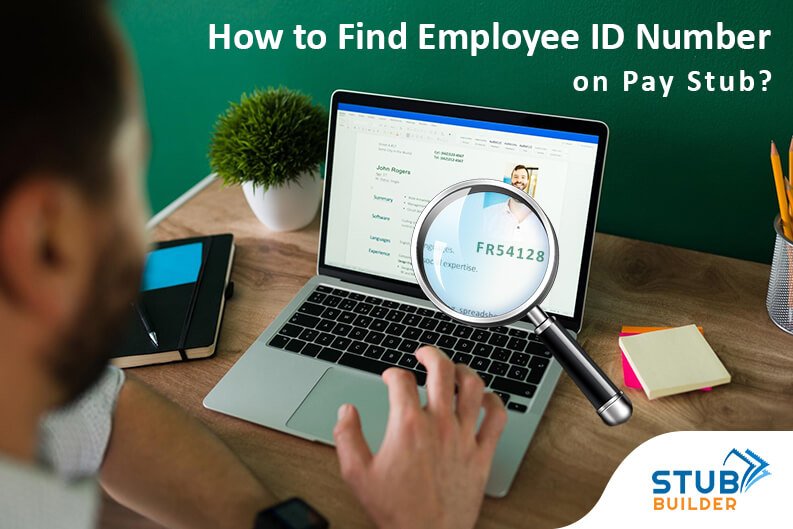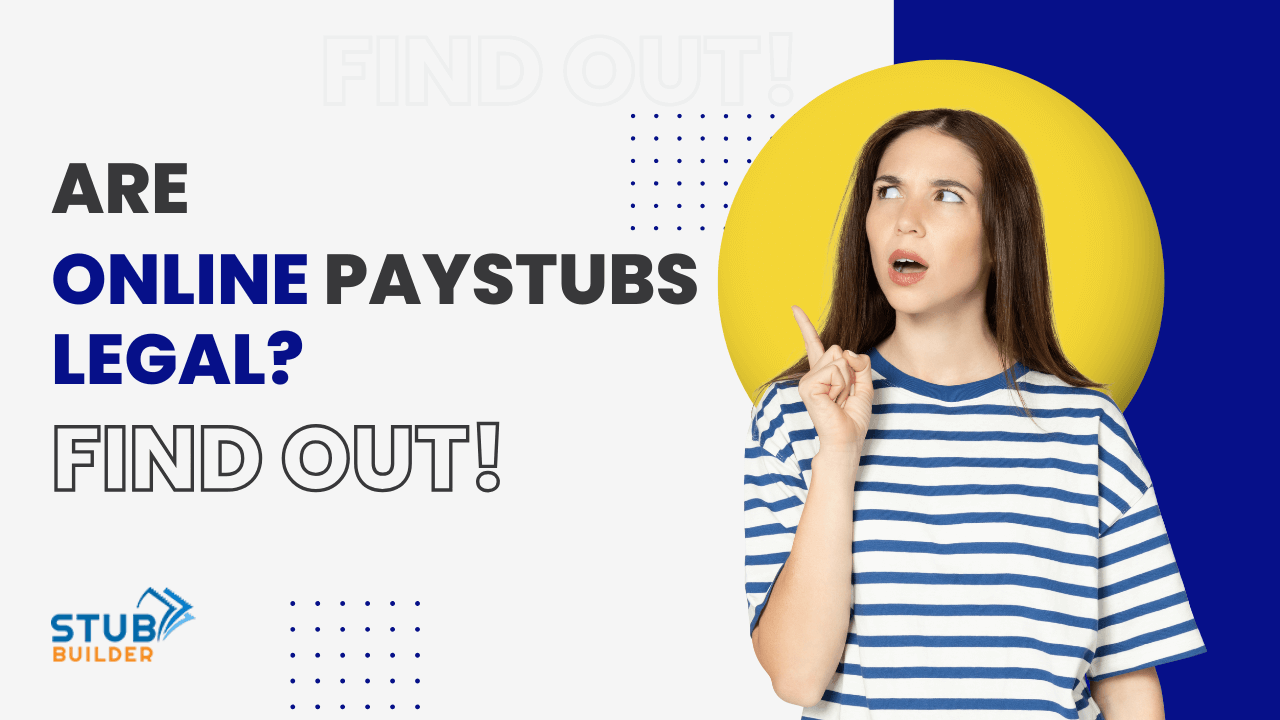
- Stubbuilder
- Sep 16, 2025
How to Find Employee ID Number on Pay Stub?
On a paystub, every single financial detail matters. Whether it’s the employee name, employer name, employer identification number, or employee ID number on pay stub- each detail plays an important role.
While checking pay stub- You might also need your employee ID to file taxes, apply for credit, or apply for loans.
But do you know how to find employee ID number? If you don’t know – By the end of the blog, you’ll know exactly how these figures function and how you can find them.
What Is an Employee Identification Number On a Pay Stub?
Your employer will assign you a unique code or number known as your Employee Identification Number (Employee ID). The employee ID number on pay stub serves as an internal reference to assist payroll and human resources departments in keeping track of your employment history, pay, and benefits.
If you are wondering, “Where to find employee id,” then here is the answer. You can find the Employee ID number on a paystub, payroll slip, or check stub. The detailed information about the payroll ID number is mentioned in the payroll slip.
The employee ID in payroll system guarantees proper payroll processing, records management, and paycheck direct deposit. Your employee ID is exclusively for business use, as opposed to your Social Security Number (SSN), which is used for government and tax reporting
Employee ID Formats
Depending on the business, employee ID formats can differ. While some companies may use a combination of letters and numbers, others may use straightforward numeric codes. The goal is always the same, regardless of format: to offer a safe and effective means of managing employee data without disclosing private information like your Social Security number.
What Is an Employer Identification Number (EIN)?
An Employer Identification Number (EIN) is a unique 9-digit number issued by the Internal Revenue Service (IRS) to identify a business entity. For businesses, it functions similarly to a Social Security number.
The EIN is used by the IRS to monitor tax obligations, confirm business activities, and guarantee adherence to federal laws.
Companies that operate as corporations or partnerships, withhold taxes, hire staff, or file specific tax returns are required to obtain an EIN. Beyond taxes, an EIN is also essential for setting up business bank accounts, applying for credit, and generating employee pay stubs.
When Is an EIN Required?
- Issuing Earnings Statements – Employers must include their EIN on employee pay stubs and other payroll documents to comply with federal and state reporting rules.
- Opening Business Accounts – Banks generally require an EIN to open a business checking account or process financial applications.
- Hiring Employees – Any business with employees must have an EIN to report wages and withhold taxes correctly.
How to Apply for an EIN
Applying for an EIN is straightforward and free of charge. Employers can apply online through the IRS website or by submitting a paper application. Once assigned, the EIN should be used on all tax forms, payroll records, and employee earnings statements to ensure proper documentation and compliance.
How to Find Employee ID Number?
Your employer’s payroll system and record-keeping procedures may affect where your employee ID lookup is located. Here are the most popular locations to check if you’re not sure where to look:
- Company Directory: Some businesses keep directories in which their staff members are listed with their individual identification numbers.
- Pay Stub: The employee ID is printed by many employers on pay stubs, usually at the top or bottom next to your payroll and personal information.
- Employee Badge or ID Card: If you are thinking – How to get an employee ID without pay stub, this is one of the ways you can get. Your employee number might be printed on the ID card if your employer offers them.
- HRMS or Payroll Portal: When you log in to a company’s online HR or payroll system, your employee ID is usually displayed.
- HR Documents: Your employee ID may be included in orientation letters, offer letters, or your employee number on paycheck.
- Ask Your Supervisor or HR: The quickest way to get your employee ID is to make an HR employee ID request.
When you know where to look, you can quickly find your employee ID for financial verification, payroll, or HR-related tasks.
Importance Of EIN And Employee ID Number
In payroll administration and financial reporting, the Employer Identification Number (EIN) and Employee ID Number are both essential. Perhaps you don’t know the employee identification number vs ssn difference, but both terms are equally important.
Some of the main explanations for their significance are listed below:
1) Assures Correct Pay Stub Records
To generate accurate pay stubs, employee IDs and EINs are required. They make sure that wages, deductions, and benefits are accurately recorded while maintaining payroll in accordance with labour and tax laws.
2) Makes Employee Record Management Easier
When they have unique identifiers, HR and payroll teams can efficiently track employee data, manage benefits, and resolve payroll disputes without confusion—even in organizations with large workforces.
3) Requirements for Legal and Compliance
Many states require pay stubs to display employee IDs and EINs. If employers don’t follow these rules, they risk fines and legal problems. Need to check with the w2 employee id number as well.
4) Lowers the Chance of Pay Stub Fraud
The Unique Identification Number stops ghost workers and fraudulent payments. They provide a reliable audit trail that ensures each payroll transaction is transparent and accountable.
5) Facilitates Easy Financial Procedures
While employee ID number on pay stub often required for business banking, tax filing, and employee paycheck issuance, employee IDs ensure that each paycheck is correctly attributed to the right person. Together, they streamline payroll and financial procedures.
Final Thoughts
Now that you understand the purpose of the employee ID number on pay stub, you’ll be better able to recognize and use them when reviewing your earnings statements. These identifiers may seem straightforward, but they are crucial for proper payroll, record-keeping, and efficient employer-employee communication.
If you’re ever unsure about your employee ID or need clarification, your HR or payroll department can provide guidance and ensure that your records are correct. Remember that your employee ID is usually found at the top of your pay stub, next to your name. It’s a crucial piece of business identification, so treat it with care even though it’s not as private as an SSN.
Check the Stub Builder, to create the accurate and professional paystub in minutes. If you sick any help let us know, we are providing 24*7 support.
FAQs:
What is a 9 digit employee ID number?
An employee’s 9 digit employee ID number is a special code that is given to them for administrative, payroll, and human resources purposes.
How to generate employee ID number?
In order to prevent duplication, employers usually use payroll or HR software to generate employee ID numbers. This software generates sequential or system-based codes.
How do I find my employee ID number on Workday?
To locate your employee ID in Workday, navigate to your profile and look for the “Personal Information” or “Job” tab. This is where the Workday employee ID is typically displayed.
Where can I find my employee ID number?
Your pay stub, ID card, HR portal, salary slip, and other official employment documents frequently include your employee ID number.
How many digits are in the employee ID number?
Depending on the company’s system, the number of digits can range from four to nine.
What is employee ID in salary slip?
The employee ID is a special code that appears on a pay stub and is used to identify the worker for record-keeping and payroll processing.











